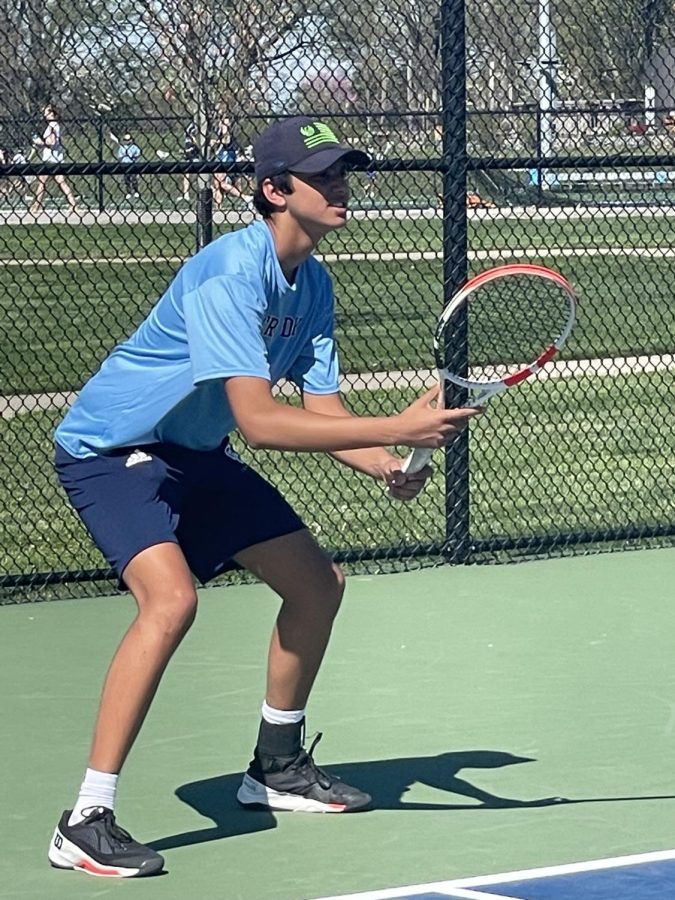By Roshan Chandrakumar ’17, Contributor
When I first heard of the requirement for sports as a freshman, I was quite shocked. Eight seasons! It seemed a lot to ask of students who have their hands full with academics and other extracurricular activities. But looking at our school and our teams, I realize that eight is just right.
The requirement for sports credits can be met in various ways. Many students play sports to help meet their requirement. Students can participate in an average of two sports a year for four years to fulfill the requirement. Alternatively, they can take two Physical Education classes, either for a semester during school or for two weeks, six hours a day during the summer. Students need not to go out of their comfort zone as there are options for everyone.
85% of students meet at least some of the requirement by participating in sports. Sports unite us. Pushing one another in practice, battling through pain together, sharing the field, the court, and the course with teammates, creates relationships unlike any other. Representing your school makes every competition bigger and more important. Any time you step out and go to war with an opponent, you are representing your school. Your classmates and teachers are there watching you compete and this heightens the sense of community that sports create. Any game against Summit, Seven Hills, or CHCA is a big one and draws a crowd. It’s a point of discussion for days before and after the event. Winning brings you pride and recognition. Anytime you win a big game, congratulations are constantly offered in the hallway from teachers and from peers alike. Losing, despite how bad it may feel, also brings us together. We rally around each other, trying to keep our teammates’ heads up. A “you’ll get ‘em next time” makes you feel better and makes you thankful that we have the community we do. At Country Day, sports are more than just a physical activity. They unite us as a community.
The need for eight seasons of sports, more than required at most other schools, must warrant the question: “Should all sports be worth the same amount of credit?” Not all sports need the same amount of time, effort, and commitment. J.V. golf requires nowhere near the same amount of effort that many varsity sports require. In fact, almost all junior varsity sports require less commitment than the varsity sports do. So, should they be worth the same credit?
Bryce Flannigan ’17 thinks so. “They should all be worth the same credit. If you’re participating in a sport then you deserve a credit. You’re putting effort into it and you should be rewarded.” Everyone is capable of playing the same sports. No one is required to play one sport. One may feel obligated to, but they are still capable of playing a different, less demanding sport.
Shaheel Mitra ‘17 feels differently. “I feel that a sport like varsity football or basketball deserves more recognition than a sport like J.V. golf. The difference in the amount of time and effort should be represented fairly.”
Being a member of J.V. golf for a year, I can tell you that it doesn’t require the same amount of effort and time as a sport like soccer or swimming. This doesn’t mean that it shouldn’t be worth any less credit than it already is. A sport like J.V. golf or tennis doesn’t require the same amount of practices and dedication that a sport like basketball does. There are different options that can be taken to address the glaring inequalities between certain varsity and J.V. sports.
Attendance of practices and games could be stricter and more heavily monitored. Every sport should be required to practice for a certain amount of time; a standardized requirement that is the minimum to get a sports credit. Coaches must be stricter with attendance and make sure their players are meeting the required amount of practices. We are required to have 120 hours of physical education. This means 15 hours of sports per season. Let’s say that each practice is an hour (minimum) and that every athlete must make 3 practices a week. This would ensure that everyone would be putting in at least 15 hours of effort into each sport season. Coaches could always make practices longer, but a standardized minimum at least should be set.
John Pettengill ’18 suggested that varsity sports could be worth more than junior varsity. “Varsity sports should be worth double the credit. This would represent the difference in effort required for varsity sports.”
By doubling a varsity sport, only 4 seasons would be required for varsity athletes, while 8 would still be required for a J.V. sport. This would allow varsity athletes to spend more time working at one sport, a sport they are more dedicated to. This would also encourage competition, more of a drive to be on a varsity sport.
In the end though, we could just leave the system alone. While some may feel like there are unrepresented inequalities between sports, not much is wrong with the credit system now. Like the old adage goes “If it ain’t broke, don’t fix it.”
Image Source: http://www.graco.com/us/en/products/industry/recreation/sports-equipment.html







